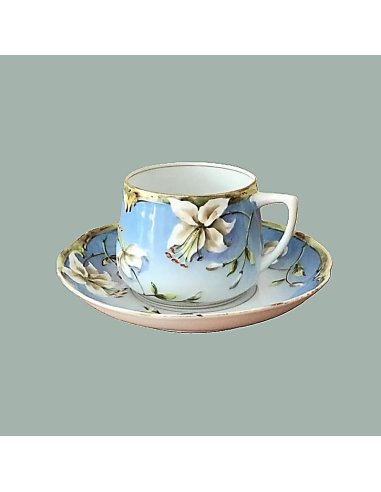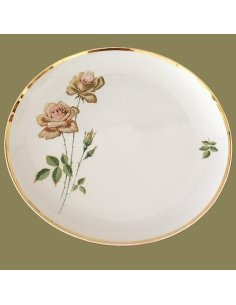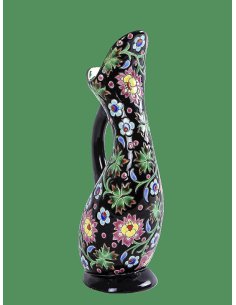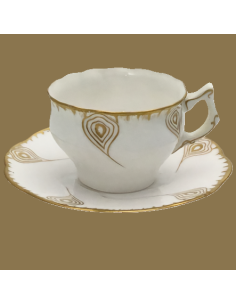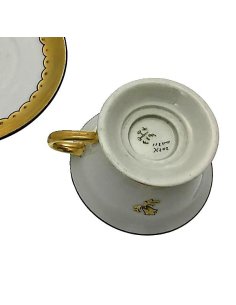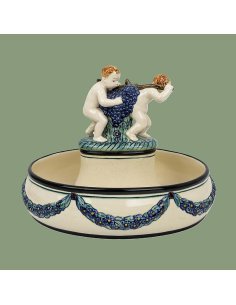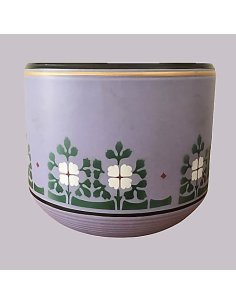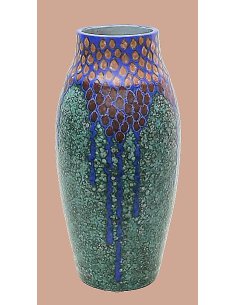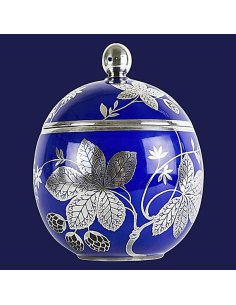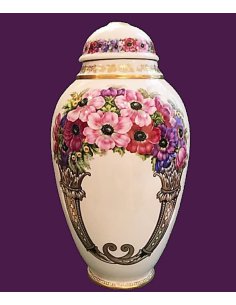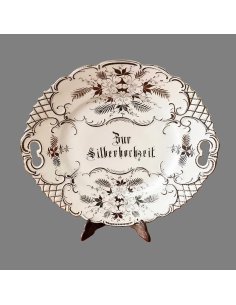Art Nouveau porcelain cup and saucer from the Russian Gardner Manufactory
This antique, decorative porcelain cup and saucer comes from the long-established Russian Gardner Porcelain Manufactory (Russian: Гарднеръ), founded in 1766 near Moscow. It was manufactured around 1900, during the waning Tsarist Empire, presumably still under the supervision of the Gardner family or immediately after its transfer to the Kuznetsov Porcelain Factory.
The floral decoration with delicate white blossoms on a blue background and fine gold rim decoration reflects the typical Art Nouveau design. The natural lines and gentle color transitions lend the cup lightness and elegance.
Particularly valuable is the preserved base mark with a double-headed eagle, the Cyrillic lettering "Гарднеръ" (Gardner), and the emblem of St. George, a reference to imperial patronage – Gardner was the official purveyor to the Russian imperial court from 1809 onwards. The stamps with St. George and Cyrillic lettering were used from approximately 1880 to 1917. This variant reflects the official character of the porcelain, which was often produced for the nobility or upper middle class.
With this cup, ART FLAGEY offers an authentic piece of Russian porcelain history, created in the tension between imperial court luxury and Art Nouveau art. A special collector's item with rarity value – ideal for porcelain lovers and connoisseurs of Eastern European arts and crafts.
About the Manufactory Gardner:
The Gardner Porcelain Manufactory is one of the most important historical porcelain manufacturers in Russia.
The Gardner Manufactory was founded in 1766 by Francis Gardner (actually Franz Gardner, an English merchant from Staffordshire) in the village of Verbilki, northwest of Moscow. It was the first large private porcelain manufactory in Russia, independent of the Imperial Porcelain Manufactory in St. Petersburg.
Gardner wanted to produce Russian porcelain that could compete in quality with European Meissen or French Sèvres porcelain – while remaining affordable for a wider audience.
In 1891, the Gardner family sold the manufactory to the Kuznetsov Corporation, which merged other Russian porcelain factories. The pieces continued to be produced, but often under the name "Kuznetsov" or with mixed brands. The factory continued to operate even during the Soviet era, producing in part under the name "Verbilki Porcelain Factory" (Verbilkowski Farforowyj Zaod).

